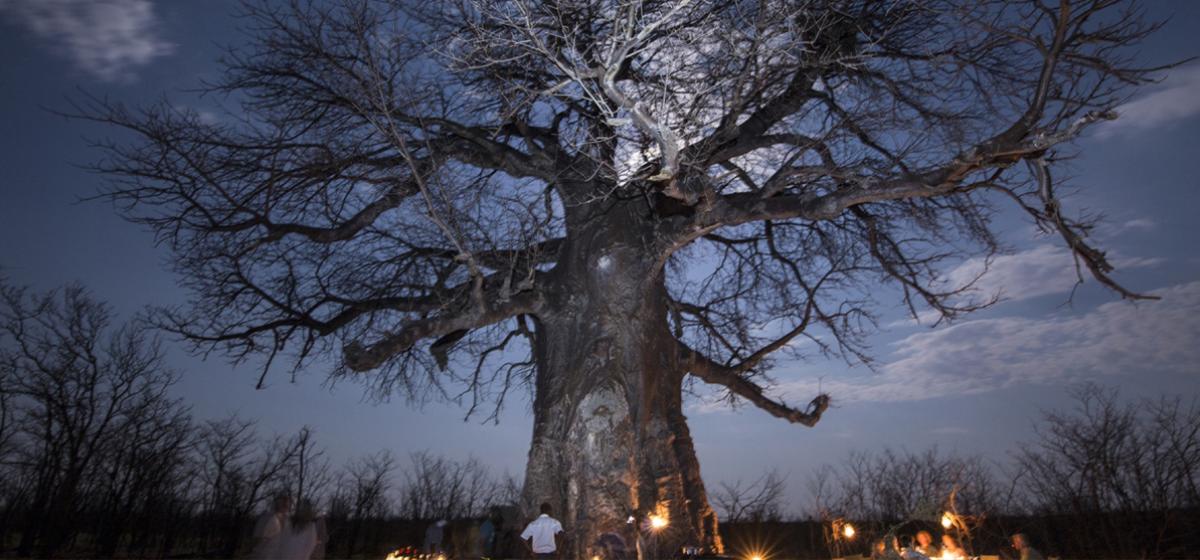The history of Botswana is characterised by migrations of peoples into the country from all directions, as well as internal movements of people. The group that eventually emerged as most numerous and dominant, were the Batswana. Their pattern of dividing and migrating saw the formation of numerous Tswana tribes, and their eventual occupation of most parts of the country.
The term "Batswana" refers to the ethnic group of people who speak the Setswana language and share the Sotho-Tswana culture. In its common contemporary usage, Batswana refers to all citizens of the Republic of Botswana, regardless of their ethnic background. The singular is "Motswana": a citizen of the country. "Tswana" is used as an adjective - for example "Tswana state" or "Tswana culture".
First Inhabitants
The earliest modern inhabitants of southern Africa were the Bushman (San) and the Hottentot (Khoe) peoples. They have lived an almost unchanged lifestyle in the country since the Middle Stone Age.
The physical characteristics of the Khoe and the San are similar. Both tend to have light, almost coppery skin colour, slanted, almond-shaped eyes, high cheekbones, thin lips and tufted, tightly curled hair. Both speak quite different click languages, living as hunter and gatherers from the land.
Approximately 60,000 years ago, the peoples of sub-Saharan Africa were of one tribe, probably of Khoe/San type. It is believed that the Bantu-speaking people were an offshoot from the Khoe/San tribe. This is thought to have occurred in the tropical rain forest regions of equatorial Africa about 10,000 years ago. The Bantu-speaking people gradually developed darker skin pigmentation and different physical attributes due to the different environments they eventually occupied.
Independence
Growing dissatisfaction with British protection and an increasing nationalism among Batswana found expression though tribal leaders, who exercised considerable power at a local level. From the 1930s, demands for self-determination were increasingly vocalised through the African Advisory Council, which often found itself in conflict with the colonial administration.
After 80 years as a British protectorate, Bechuanaland attained self-government in 1965, becoming the independent Republic of Botswana on September 6, 1966. Sir Seretse Khama was elected the first president and served until his death in 1980. Stability and harmony have prevailed ever since.
One of the world's most impoverished nations at the time of independence, the discovery of commercially exploitable diamonds in 1967 paved the way for economic prosperity, with Botswana becoming a shining example of an African success story.
The Botswana Democratic Party (BDP) has been in power since the first democratic elections in 1966 and continues to draw support from a wide range of Botswana's population. Mr. Ketumile Masire served as Botswana's second president, taking over from the late Sir Seretse Khama in July 1980 and continuing a tradition of good governance. This eloquent former journalist ruled Botswana for 18 years, during which time it became one of the richest countries in Africa.
Sir Ketumile Masire voluntarily retired from office in 1998 at the age of 72, and was succeeded by his then vice president and former finance minister, Mr. Festus Mogae. Headed by President Mogae and Vice-President Ian Khama, son of the country's founder president, the ruling BDP swept to victory in the democratic election held during October 1999, securing 33 of 40 seats in the nation's Parliament.
When President Mogae stepped down in April 2008, he was succeeded by Vice-President Khama, who became His Excellency Seretse Khama Ian Khama the 4th president of the Republic of Botswana. President Khama remained in office through two terms until 2018 when he was himself succeeded by his Vice-President, and the current and 5th President of the Republic of Botswana, His Excellency Mokgweetsi Eric Keabetswe Masisi.











